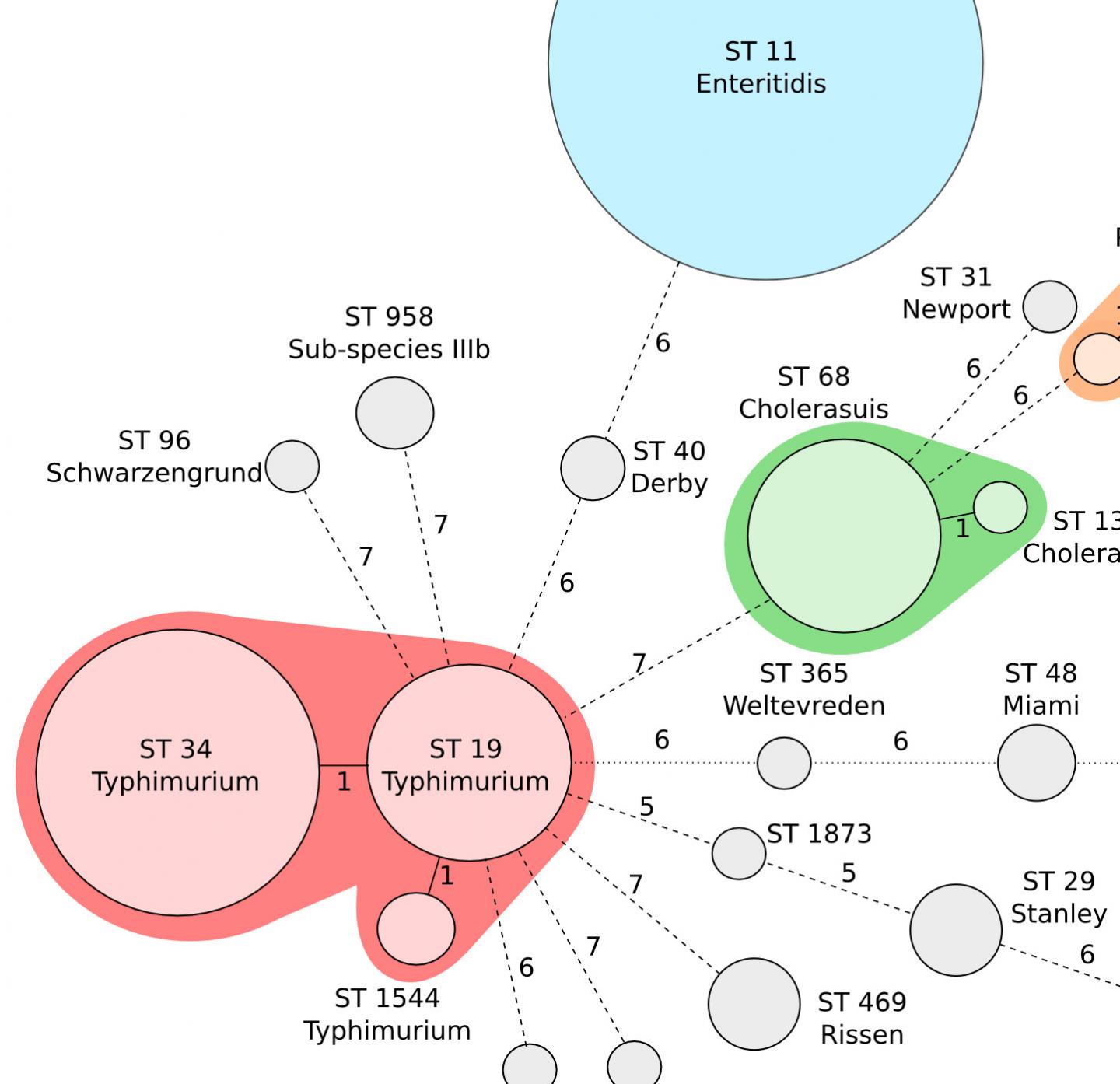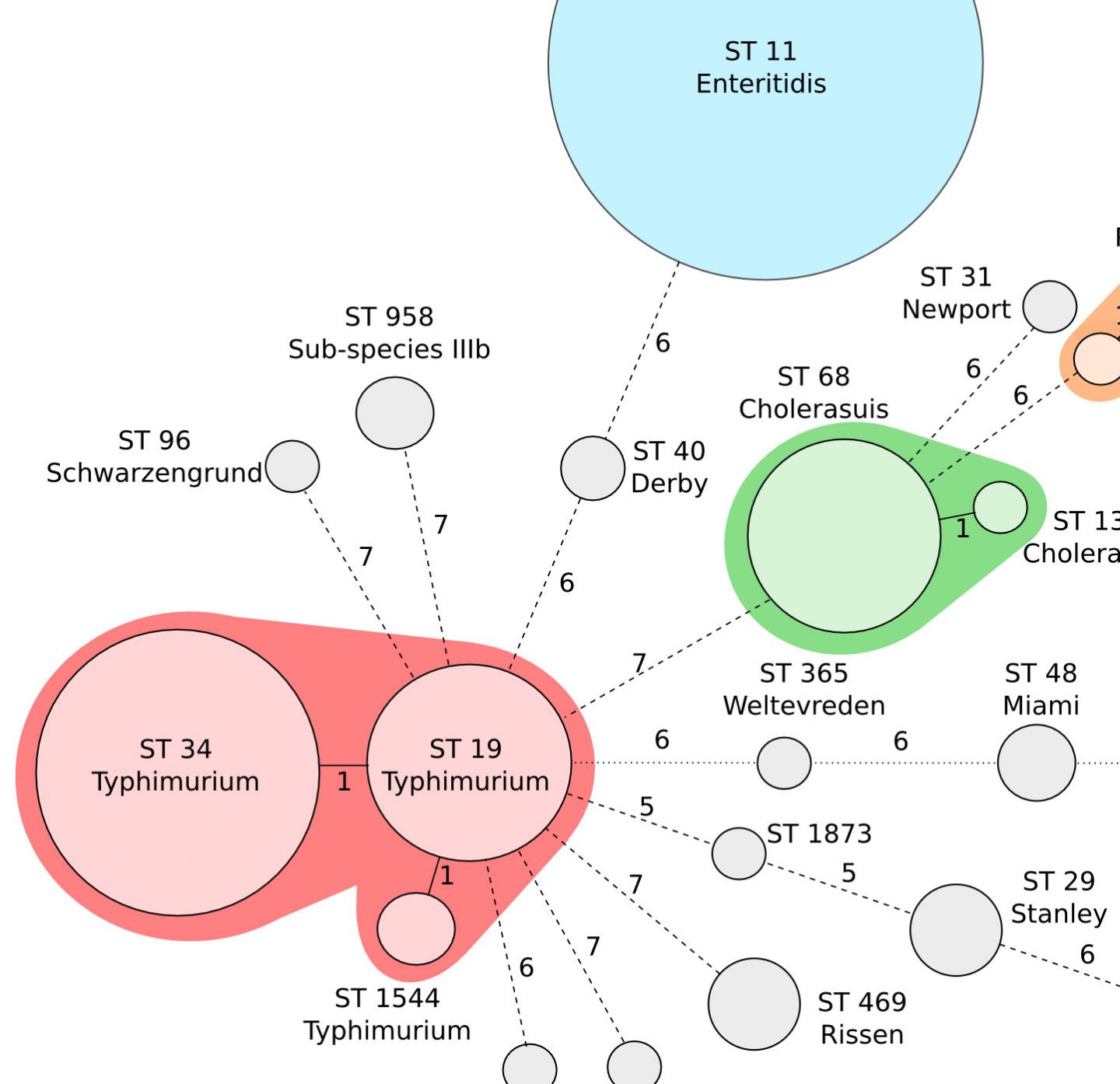
Invasive non-typhoidal Salmonella (iNTS) infections occur when Salmonella bacteria, which normally cause diarrhea, enter the bloodstream and spread through the body. iNTS infections may cause illness and death in malaria-stricken children and HIV-infected adults in sub-Saharan Africa, but little is known about the prevalence and severity of iNTS in Asia. A study published in PLOS Neglected Tropical Diseases suggests that iNTS disease, like in sub-Saharan Africa, is a severe infection with a high mortality rate in Vietnam. Stephen Baker, Corinne Thompson, and Nguyen Phu Huong Lan, working at The Hospital for Tropical Diseases and Oxford University Clinical Research Unit in Ho Chi Minh City, Vietnam and colleagues found that HIV infection was a risk factor for both contracting and dying from iNTS and that iNTS infections were most commonly diagnosed in HIV-infected adult men.
Some Salmonella subspecies can cause an aggressive systemic infection loosely resembling typhoid fever, in addition to the common diarrheal clinical syndrome NTS organisms cause in humans. While NTS is a common cause of diarrhea in Asia, especially among children, few if any data exist on the epidemiology of invasive non-typhoidal Salmonella infections. To identify the clinical features of iNTS and risk factors associated with death from an iNTS infection, Baker and colleagues retrospectively analyzed clinical and laboratory data from 102 patients testing positive for iNTS at a hospital in South Vietnam between 2008-2013. Laboratory data included standard hematology testing and biochemical testing results gleaned from the hospital records. Clinical data included sex, HIV status, axillary temperature, the presence of coinfection, and disease outcome.
Outcomes were classified as follows: 1) recovery or improvement, 2) worsening status on discharge (taken home to die with family), 3) death, 4) transfer to a different hospital for a specific treatment. Outcomes 2 and 3 were counted as fatal. The collaborating researchers then determined the serogroup of the isolated Salmonella from the original blood culture and used molecular methods to identify the dominant serovars causing iNTS in this setting.
Out of the 102 iNTS cases for which data were available, 8% were children and the median age of patients was 33 years. 71% were male and 33% of all cases reported a history of intravenous drug use. All patients diagnosed with iNTS infections underwent HIV testing, with 71% testing positive. Patients most commonly presented with fever and pallor while clinical features of HIV-infected patients also included oralpharyngeal lesions. 65% of patients improved or recovered prior to hospital discharge while 26% either died in the hospital or were discharged to die at home, contributing to a 28% mortality rate. 92% of patients who died were HIV-infection and 23% had a secondary infection.
In addition to analyzing the clinical features and outcomes of iNTS, researchers identified 17 different serovars associated with iNTS disease in the population. They found that S. Enteritidis and S. Typhimurium were the most common serovars causing disease in 43% and 30% of cases respectively, while S. Typhimurium was most frequently identified in HIV-infected patients.
The researchers acknowledge that this study has limitations, "Our retrospective analysis for risk of death may be biased by misclassification as we coded patients who were taken home by family members as fatal, though we did not have a confirmed death report from these individuals." Secondly, most children with HIV are referred to a pediatric hospital and would not have been present at the hospital where the research was conducted, which means the study results may underestimate the burden of iNTS disease in children.
However, this study is the first of its kind, laying the groundwork for future iNTS-related public health research and interventions in populations outside sub-Saharan Africa. According to the authors, the study, "provides the largest description to date of iNTS patients to date in Southeast Asia and highlights important similarities and differences between the African and Asian settings. We suggest that continued surveillance, including sequence typing/whole genome sequencing, should be performed to monitor for emergence or introduction of MDR strains or strains with any apparent enhanced virulence phenotype".
###
Please contact [email protected] if you would like more information about our content and specific topics of interest.
All works published in PLOS Neglected Tropical Diseases are open access, which means that everything is immediately and freely available. Use this URL in your coverage to provide readers access to the paper upon publication: http://dx.plos.org/10.1371/journal.pntd.0004857 (Link goes live upon article publication)
Citation: Phu Huong Lan N, Le Thi Phuong T, Nguyen Huu H, Thuy L, Mather AE, Park SE, et al. (2016) Invasive Non-typhoidal Salmonella Infections in Asia: Clinical Observations, Disease Outcome and Dominant Serovars from an Infectious Disease Hospital in Vietnam. PLoS Negl Trop Dis 10(8): e0004857. doi:10.1371/journal.pntd.0004857
Funding: A strategic award from Wellcome Trust of Great Britain funded this work (WT/093724). SB is a Sir Henry Dale Fellow, jointly funded by the Wellcome Trust and the Royal Society (100087/Z/12/Z). AEM was supported by a Biotechnology and Biological Sciences Research Council grant BB/M014088/1. The funders had no role in study design, data collection and analysis, decision to publish, or preparation of the manuscript.
Competing Interests: The authors have declared that no competing interests exist.
Media Contact
Stephen Baker
[email protected]





